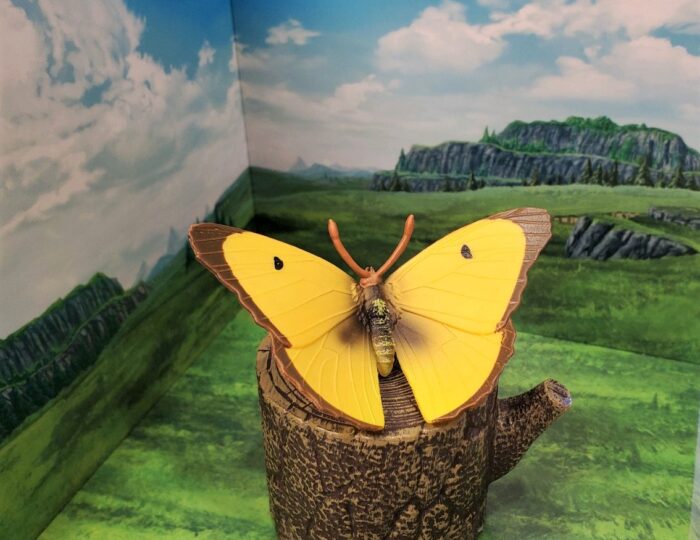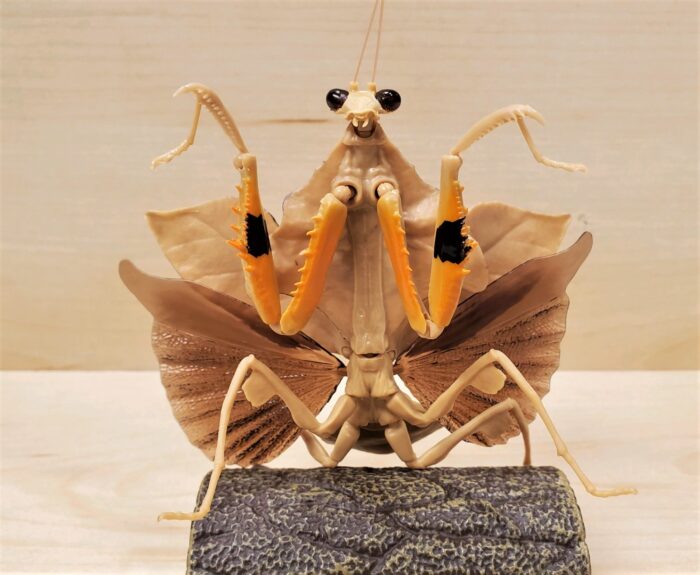I started collecting insects when I was in Junior High School, so roughly 1984 or so. Like most beginners, I collected conspicuous and familiar species in my neighborhood, including of course butterflies and moths. Among the Lepidoptera my favorites were members of the family Pieridae, commonly referred to as whites, yellows, sulfurs, and orange-tips due to their delicate off-whites and pastel oranges and yellows.
Classification: Insects
Old World Swallowtail, adult and caterpillar (Wild Animals by Papo)
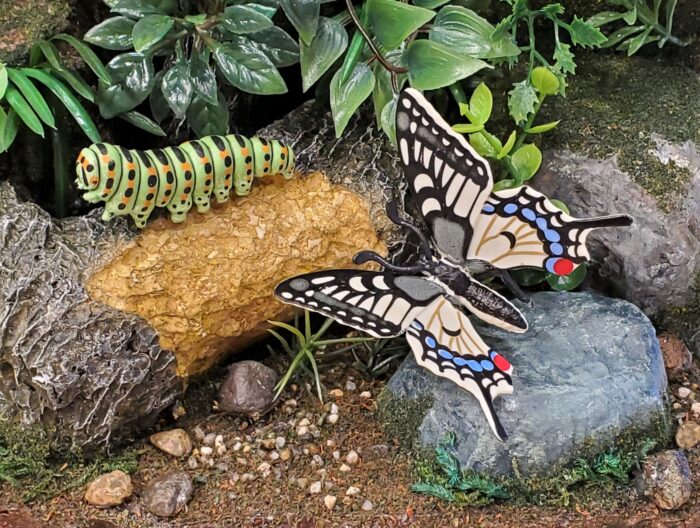
While commonly referred to as the ‘Old World swallowtail’, Papilio machaon has a very wide distribution, widest of any of the Papilionidae, covering most of the Palearctic and into western North America. Part of the species’ success is its tolerance for a variety of habitats and host plants. The butterfly can be found in forests, grasslands, hilltops, Alpine meadows, tundra, wetlands, disturbed areas, parks, and gardens.
Giraffe Stag Beetle (Revogeo by Kaiyodo)
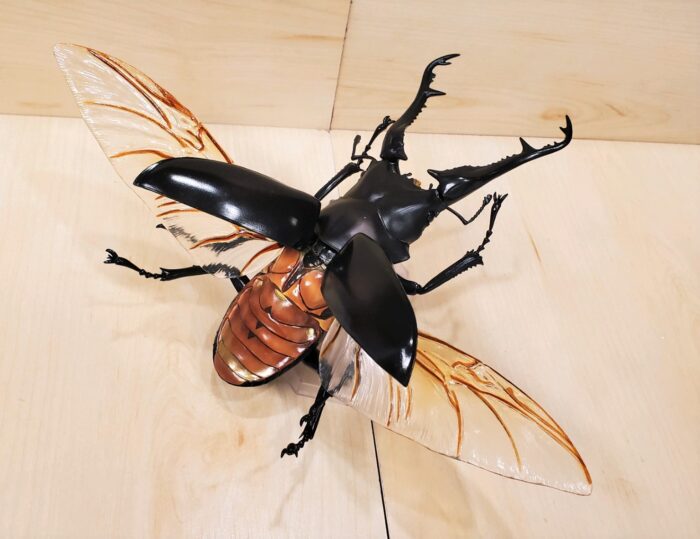
Today I am continuing reviews of Kaiyodo’s Revogeo arthropods with the giraffe stag beetle (Prosopocoilus giraffa) which was released in late 2021. This is the fifth figure in the series following an emperor scorpion (2019), red-clawed crab (2019), Asian giant hornet (2020), and Japanese giant water bug (2021).
Dung-rolling Scarab (Dung Beetle with Sound While Rolling the Ball by Kitan Club)
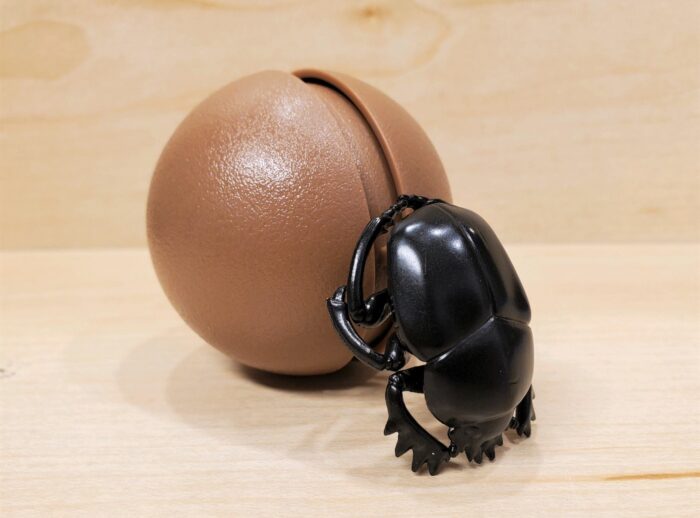
Yes, that is the name of the collection…
The Great Pyramids of Egypt. What was their grand purpose and influence? Merely grandeur tombs for Egyptian royalty? Conduits for alien visitors? A regeneration site for En Sabah Nur? Or maybe they are just giant piles of cow sh*t! Yes, really! Ever notice how a pyramid is shaped like a cascading pile of cow dung?
Green Christmas Beetle (Yowies Series 1, UK and Australian releases by Cadbury)
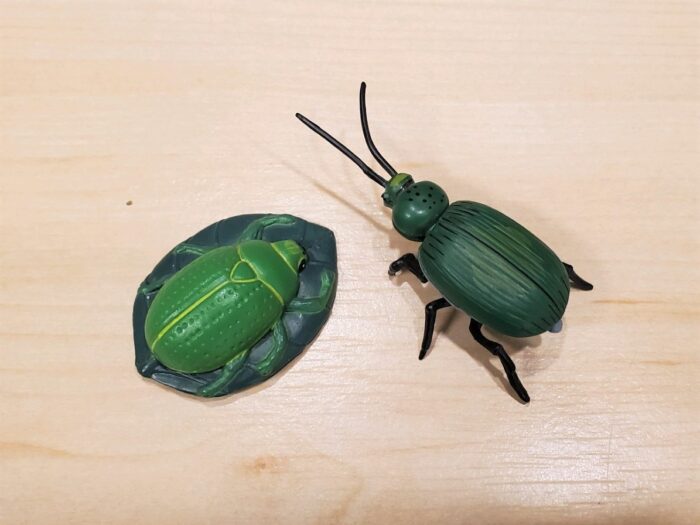
This week Christmas is celebrated throughout much of the world. In trying to keep with holiday themes, I have decided to review a pair of green Christmas beetles (Anoplognathus punctulatus) by Cadbury that were released in both the Australian and UK Yowies collections in 1997. Members the genus Anoplognathus are commonly called ‘Christmas beetles’ as they tend to be abundant during Christmas time in Australia.
Figure Pictorial Book of Gakken Insect (Bandai)
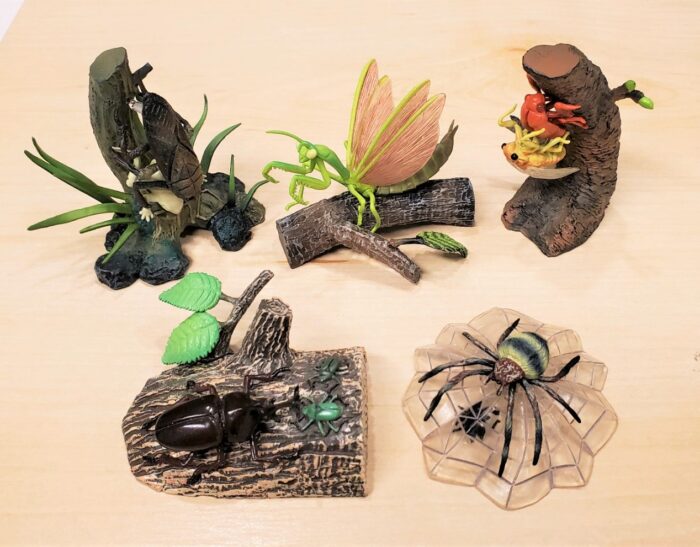
Today we will be looking at a rather fun set called Figure Pictorial Book of Gakken Insect (well, at least that’s the translation) by Bandai. The set was produced in 2003 and contains five species of Japanese arthropods. When I initially started focusing on arthropods, this was one of my ‘Holy Grail’ collections; luckily I was able to secure it fairly early on.
Southeast Asian Dead Leaf Mantis (Diversity of Life on Earth – Japanese Giant Mantis Vol. 2 by Bandai)
Rusty Patched Bumble Bee (Animals with Superpowers by Yowie Group)
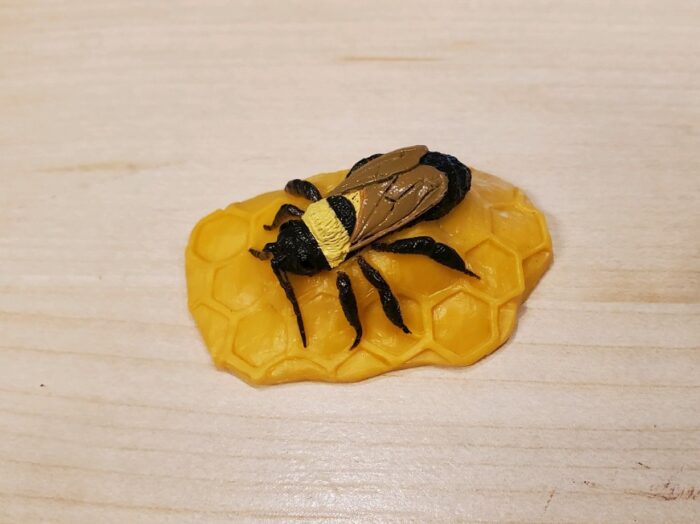
Bumble bees are not uncommon in the toy realm, usually as ‘generic bees’ in bin-style sets. Some have been made by major manufacturers, including Bullyland, CollectA, and Safari Ltd., but none of those are identified at the species level. To my knowledge, there are only two figures of bumble bees attributable to the species level, the golden northern bumble bee (Bombus fervidus) by Play Visions in 1996 and the rusty patched bumble bee (B.
Killer Bee (Insect Predators by Trendmasters)
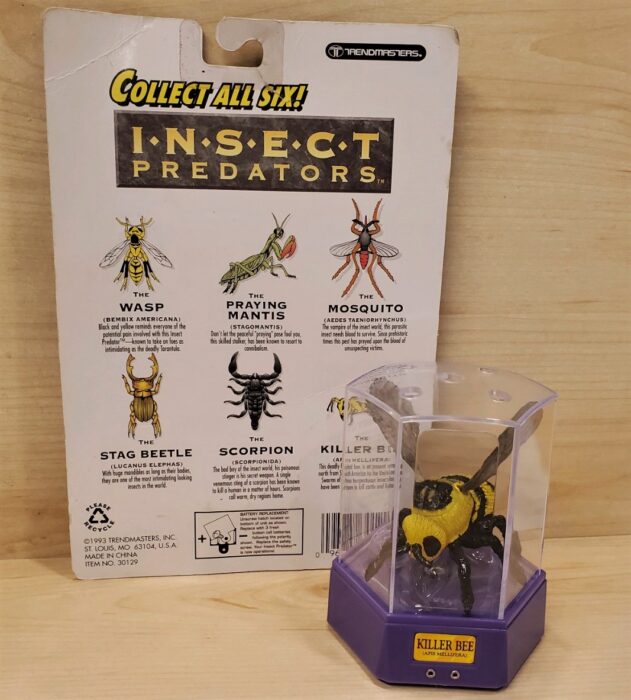
Today is my second contribution to the ongoing October theme of presenting ‘creepy and scary’ critters on the Blog. Today I will be reviewing the ‘killer bee’ (Apis mellifera) by Trendmasters. It was released in 1993 as part of their Insect Predators collection. The collection also included a scorpion (unidentified, but presumably the emperor scorpion, Pandinus imperator), the giant stag beetle (Lucanus elaphas), a wasp (Bembix americana), a mosquito (Aedes taeniorhynchus), and the Carolina mantis (Stagmomantis carolina).
Carolina Mantis (Insect Predators by Trendmasters)
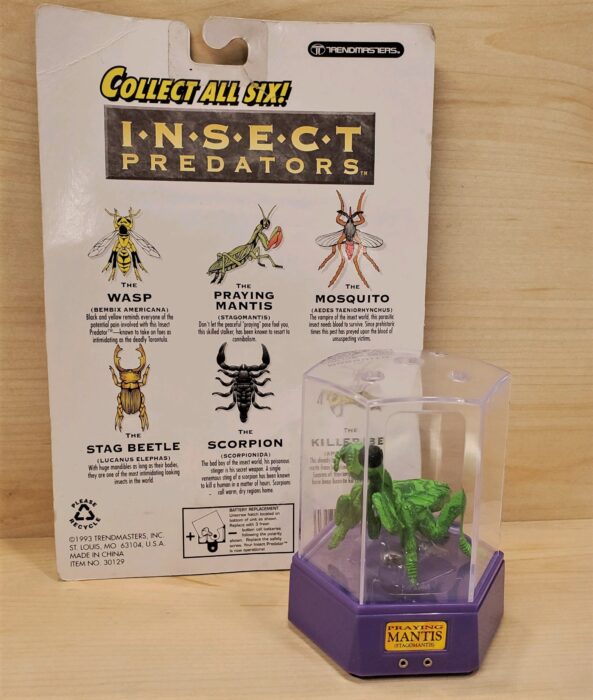
Collectors of figures and memorabilia from the Godzilla franchise should be familiar with Trendmasters. But did you know they released a series of ‘Insect Predators’ in 1993? Well, they did! The series consisted of a scorpion (unidentified, but presumably the emperor scorpion, Pandinus imperator), the giant stag beetle (Lucanus elaphas), a ‘killer’ bee (Apis mellifera), a wasp (Bembix americana), a mosquito (Aedes taeniorhynchus), and the subject of today’s review, the Carolina mantis (Stagmomantis carolina).
Japanese Black Ant (The Arinko, Volumes 1 & 2 by J. Dream Co. Ltd.)
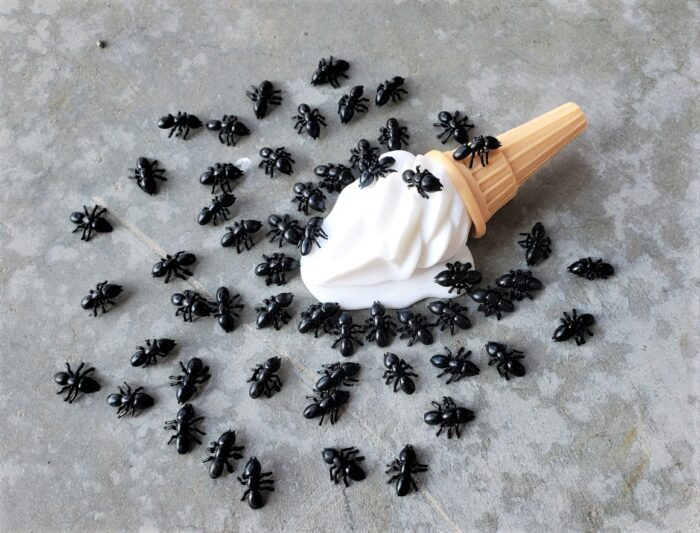
Ladies and gentlemen, uh, we’ve just lost the picture, but what we’ve seen speaks for itself. The Animal Toy Blog has apparently been taken over, ‘conquered’ if you will, by a master race of giant space ants. It’s difficult to tell from this vantage point whether they will consume the blog reviewers or merely enslave us.
Japanese Rhinoceros Beetle, life cycle (Bandai Spirits & F-toys)
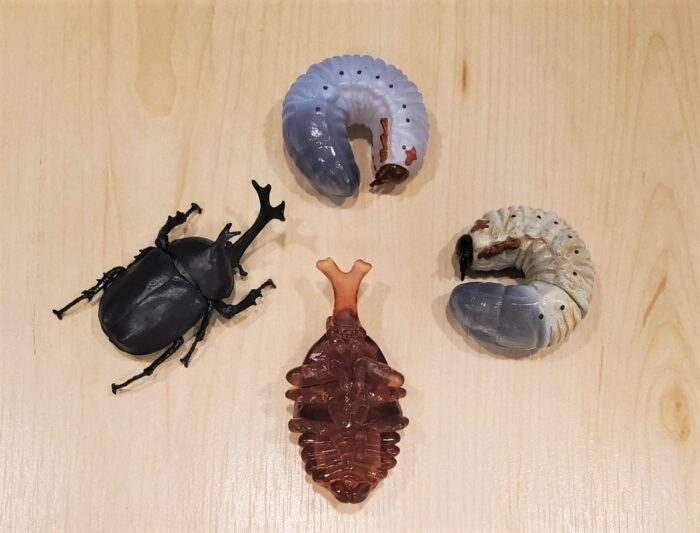
In just under two years ago, on August 21, 2019, I posted the first review here on the Animal Toy Blog. Now, I have the pleasure of posting review #500! Wow, 500 reviews just under two years! Many thanks to all the reviewers who have made this possible!
Allomyrina dichotoma is known as the Japanese rhinoceros beetle in English and kabutomushi in Japanese.

